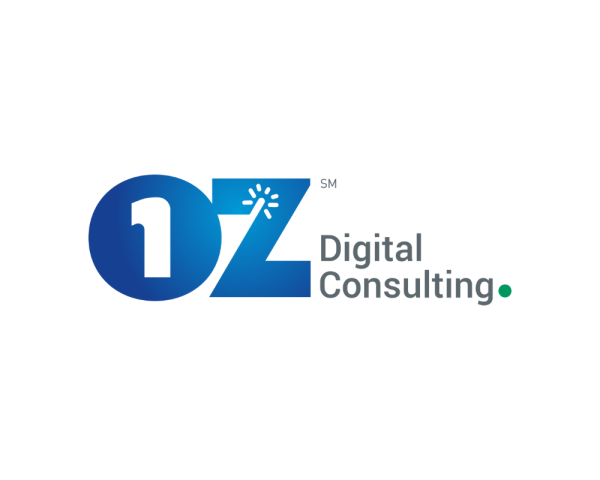You’ve just visited the grocery store, and it’s likely that you made a choice at the checkout. Did you scan and bag your items, or did you let a cashier scan and bag them for you? The choice may depend on just how many groceries you purchased or how you feel about your store’s tech level.
Even now, though, it’s clear that there is a next step or two to be made in grocery store technology.
Where is the line where you simply feed your groceries onto a conveyor and they are automatically scanned and bagged? Where are the technologies that run and pick everything off of the shelves for you and deliver them to a waiting area or to your home without a delivery driver? Home deliveries are becoming more automated. Uber Eats and Postmates are already using robot deliveries in test locations with high population densities.
Which raises the question: Just how far can technology take any industry? In many cases, technology makes its case so profoundly that we might call it a no-brainer — like making deliveries from a restaurant with no driver, no fuel, no insurance, no parking issues and no delivery tip.
Underwriting technology for commercial insurance is also a no-brainer. When we look at all that today’s tech-enabled underwriting can accomplish and how it reallocates crucial resources to the brainy tasks, it makes its case. It is an “elegant” solution to so many commercial and specialty insurance challenges that it deserves an immediate look and quick implementation.
Drawing on joint research efforts between Majesco and Strategy Meets Action, let’s look at the benefits of today’s optimal underwriting technology to see how it produces real insights through collaboration.
The quest for insights, integration and intuitive workflow
Insurers seek to enable underwriters to focus on complex risk assessment, portfolio management and relationships with agents and brokers. Insurers need to improve the speed of underwriting, making it easier for brokers to do business with the company, and ultimately need to improve risk selection and profitability — not just for each policy and product but across the whole spectrum of business and geography. Insurers need to make complex concepts into simplified insights that leverage the underwriter expertise.
Digital thinking and platform vision
How can underwriting become a seamless hub of information, fed by the best data management and analytics practices available today? Which advancements make a real competitive difference — moving commercial and specialty insurers from capable to innovative? What does this environment look like?
A next-gen framework must support the workflow of relationship management, transaction processing, collaboration with brokers and portfolio management of the entire book.
It must also support processes to leverage new data, new models and new analytics to garner deeper insights, based on the three key attributes of digital thinking:
Intuition
In underwriting, the user experience should be tailored and personalized. No two underwriters are the same. The new underwriter has a completely different set of tasks compared with an underwriting veteran. As underwriters grow, their roles may change and shift. A digital underwriting platform will tailor its processes and workflow based on underwriter specifics to provide guided and balanced experiences.
Today’s digital underwriting platform also must enable communication and collaboration among underwriters, brokers and others who may be involved in the process.
See also: Dramatic Shift in Underwriting Ahead
Integration
The first steps of automation were those made to integrate requirements data into the scoring process and to facilitate the underwriting workflow. Today, this integration is vastly expanded to contain connections with everything possible — data, collaborative communications and decisions. Application programming interfaces (APIs) need to connect with centralized data platforms to provide real-time synchronization with policy administration, rating engines, various tools and spreadsheets, analytic/predictive models, transformational technologies and new data sources (structured and unstructured).
Everything gains its power in the integration layers. Workflow becomes easier to automate. Data becomes easier to access and understand. With advanced digital communication tools, information sharing becomes more fluid and automatic, both within the company and outside its walls. There are so many valuable streams of data available today, but most are hindered by an inability to integrate the data into the current workflow.
Insights
Insights are made up of the “just-right” information presented in easily digestible views from multiple angles and layers. All relevant sources of data and analytics for the transaction, decisions and portfolio management are vital and accessible. Dashboards, alerts, business intelligence and advanced analytic tools are made available across any and all data points and through any lens: product, broker, underwriter, policyholder, market segment, region, etc.
Today’s digital underwriting provides the latest data and analytics for product/pricing/appetite and underwriting guidelines that are linked to intuitive and intelligent workflows and engines.
Tech capabilities that advance underwriting for commercial and specialty insurance products
The technology to support new digital attributes goes beyond the basic underwriting found in policy solutions. It is more advanced and comprehensive than even the underwriting workbench of the past that was focused on workflow and process. What is required is a digital underwriting platform that not only enables today’s workflow and process but elevates the underwriting process and decision-making, as well.
This evolution of underwriting is powered by solutions that leverage:
- a digital no code/low code platform
- AI and advanced predictive analytics
- new communication and collaboration tools
This can be accomplished through a next-gen underwriting workbench that runs standalone and integrates seamlessly with other systems and data for rapid implementation and flexibility for future enhancements and upgrades.
Underwriting technology is a wise investment
Most commercial and specialty insurers are adept at understanding their customers and niches. Now is the time to pay close attention to the pains that their business customers are encountering.
When the economy is posing headaches for companies large and small, and many businesses are struggling to survive, areas of expense come under fire. It’s vitally important that insurers are seen as the protectors of business — with insurance as a high-value asset — as opposed to just a necessary expense that can be shopped around like any capital expenditure. Commercial and specialty insurers need to remain competitive by providing the accuracy, value and innovation that will keep company customers loyal. Commercial and specialty insurance underwriters need to transform underwriting into a center of support, engagement and insights, ready to contribute to cost savings for their own company and all those whom they serve.
If you think about it, this makes the decision to modernize commercial and specialty underwriting with digital and advanced data technologies a no-brainer. Every front-end improvement contributes to the insurer’s bottom line. Every step forward makes commercial and specialty products more competitive and makes insurer solutions more collaborative. For organizations that consider themselves business partners, digitally enhanced underwriting will build trust in the business relationship and protect both businesses and insurers from the unknown. Is your organization ready to take advantage of today’s next-gen underwriting platform?
To hear the latest from Majesco and SMA on Underwriting and analytics, be sure to watch Majesco’s webinar, The Art and Science of Underwriting Powered by Artificial Intelligence and Machine Learning.























